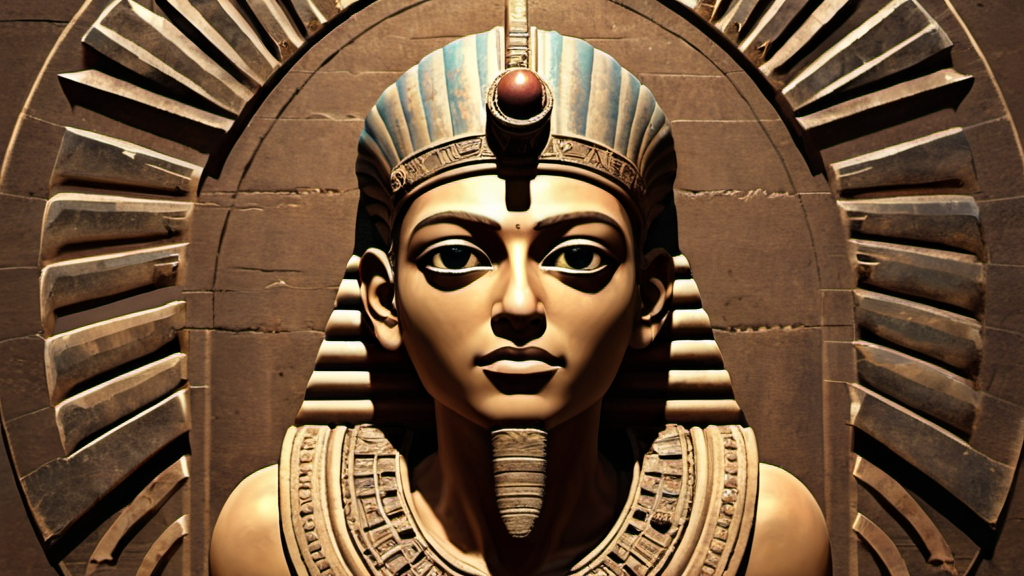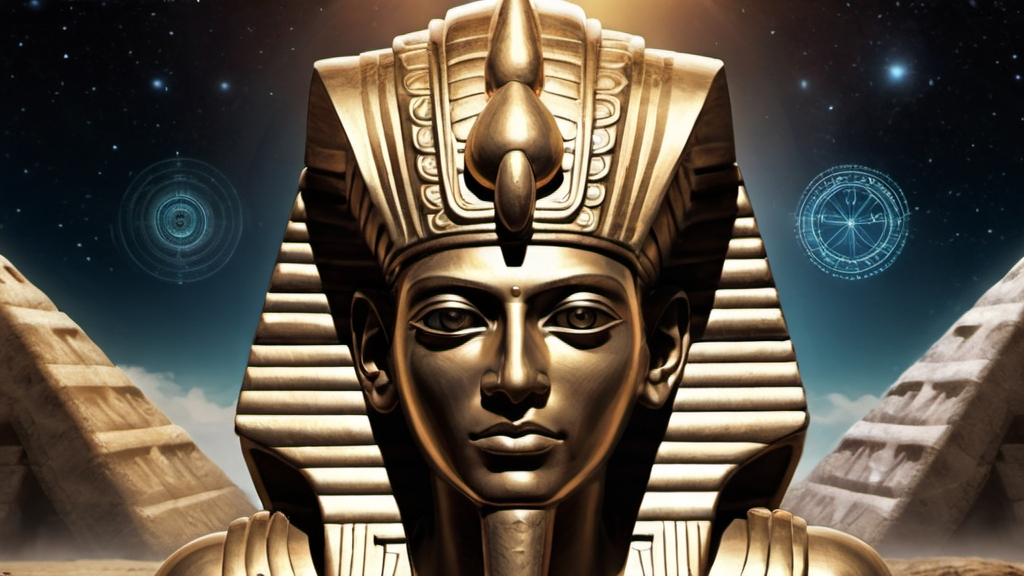Anunnaki Unveiled: Grasping Enigmas from the Past.

1. Introduction
Clark introduces the term “pasty syndrome” in reference to the modern human race focusing too heavily on their present and too little on their past. He warns that the information contained in the rest of his book hits at the core of the pasty syndrome and shatters many false teachings man has been spoon-fed through the ages. He concludes his introduction with a summary of the plethora of biblical, historical, and archaeological research he poured through to write his book. His conclusions from these works were that the same questions about humanity’s genesis and its purpose have been asked by generations across the ages. The author believes the time for true answers is now, lest humanity drift into another history-less dark age.
Modern man did not evolve from the ape but through genetically modified Anunnaki human slave workers. The perceived missing link in the developmental chain from ape to man has still yet to be found. Clark writes that modern man is a separate species created through the interbreeding of Annunagi ETs and their human slave workers. At some point, modern man was granted the ability to procreate through a sexual ritual that is literally depicted in ancient biblical texts. This gift has allowed modern man the ability to build his own civilizations and write his own histories. It is through these ancient texts that Clark has sourced much of the information contained in his book.
In the introduction to his book, author Gerald Clark writes that the genesis of Anunnaki was a series of crises that caused very advanced ETs to return to planet 445,000 years past, serving in a dimension called the planet Nibiru. His book claims to offer definitive answers to age-old questions about the genesis of the human race and to provide guidelines for anyone who wishes to make an intelligent and informed inquiry into humanity’s most important questions.
According to Clark, the Anunnaki he describes are warrior ETs who gained their reputation on a planet similar to our own. The Anunnaki developed an advanced civilization and endured a series of social, environmental, and war calamities. These calamities led them to look for a new planet where they could rebuild their civilization. The tale of the Anunnaki’s search for a new planet closely parallels the saga of modern human space travel, with both life forms using relativity principles to find suitable planets.
2. The Origins of the Anunnaki
The Anunnaki were said to be the offspring of Anu, the chief deity of the Sumerian pantheon. Anu was initially regarded as the father of the gods, and his sons were, in essence, the lesser deities. The Anunnaki were the key to everything, and the society of Sumer revolved around them. The Anunnaki are an extremely important part of Mesopotamian history, and understanding who they were will give you a greater understanding of the entire culture.
Though it is unclear as to the exact time that the Anunnaki were said to have come to Earth, it is said that they came here to look for resources to sustain their planet Nibiru. Nibiru, on a foreign orbit, passed through our solar system in ancient times, and the Anunnaki came to Earth and chose the lands now known as Iraq and Iran to set up base and extract these resources. The ancient records from which this information is derived are extremely detailed and are the most ancient texts known to man.
Almost all the ancient cultures of the Middle East and Indus Valley have recorded the goings-on of the Anunnaki and their impact on the human race. This is something which is relatively well known to scholars of the ancient astronaut theory, of which the Anunnaki are a central aspect. It is also a common theme in many of the world’s ancient religions and cultures with regards to the “gods” that came from the skies and the “creation” of man.
2.1. Ancient Mesopotamian Beliefs
Scholars have long observed parallels between ancient mythologies from cultures separated by time and space, and the Anunnaki gods of ancient Sumer provide some of the most intriguing. The creation of humanity is a topic that occurs in many ancient texts, but the choices made by the gods vary. In the Babylonian Enuma Elish, humans were created as a slave species to ease the gods’ own labours.
Comparative studies have revealed many similarities between the Old Testament and various ancient Sumerian texts. Genesis 6:1-4 identifies the Nephilim as the “sons of God” who took human wives and had children by them. This episode takes place before the great flood, when the earth had become corrupt. The story of how the Nephilim came to be on earth is explained in much greater detail in the Book of Enoch, a pseudepigraphical work from the 2nd century BCE. Enoch is a transitional figure in the Bible who was taken away by God, and he was the great-grandfather of Noah.
In the Book of Enoch, Enoch is the protagonist who has been given divine knowledge, and the Watchers are the angels who have lusted after human women and consequently fathered the Nephilim. Dr. Michael S. Heiser has written extensively on the topic of the sons of God and has identified these divine beings as members of the Anunnaki in his book “The Myth That is True”. The author contends that understanding the Anunnaki and their activities in the ancient world will resolve many problems found within the Bible.
2.2. Sumerian Mythology
Their names come down to us in the form of the gods of ancient mythology, but still with a clear overtone of their having been actual beings. According to the text, the Sumerian people took the Anunnaki as gods. The text suggests that these gods were known to the Greeks and the Egyptians. The text is somewhat unclear as to the divinity of the Anunnaki when it says “…men in those days saw the gods…”. This could be an indication of their divine nature or their value or character as superhuman. The text seems to overemphasize the Anunnaki, stating twice in one line that they dictated the fates of mankind. The Anunnaki are hardly ever depicted or represented by statues or carvings, but they are mentioned in the mythology of the time, and the ancient peoples believed in their existence as the irrefutable fates of humanity.
The Anunnaki are a group of deities in ancient Mesopotamian cultures. The name is variously written as “da-nuna”, “da-nuna-ke4-ne”, or “da-nun-na”, meaning “princely offspring” or “offspring of Anu”. According to Sumerian texts, the Anunnaki traveled from a faraway planet in our solar system called Nibiru to Earth in search of gold. These beings (gods) were human in form. They were said to have brought with them “me” and taught the Sumerians in many areas, such as governmental structure and religion. They were seen as the “fates” of humanity and were involved in a great deal of the ancient dramas of that time.
The Sumerian civilization, the first known human civilization, began on Earth in the ancient city of Sumer. The Sumerians were the first to write down their beliefs. They were a very inventive and creative people. One of the most famous stories they ever wrote down was the story of the Anunnaki.
2.3. Enki and Enlil: The Key Anunnaki Figures
The story of Enki, Enlil, and the creation of man is detailed in several Sumerian texts including the Atrahasis, Enki and the World Order, and Adapa and the Food of Life. This is a greatly overlooked aspect of mythology with deep implications. For instance, the word “Anunnaki” is often translated as “those who from heaven to earth came”, but it is actually a much more complicated word to define. One source, a former language scholar specializing in ancient cuneiform, has stated that it is incorrect to assume that the prefix “an” always means “heaven”.
He claims that “an” is a root word having to do with irrigation or water, and in this instance “Anunnaki” would translate to “those who came to earth by the way of the water”. This is interesting in consideration of the water and earth being the domains of Enki, an expert in genetic engineering who was responsible for creating mankind. This is a topic which will be delved into completely in a later article, it has great implications for the origins of mankind and the global flood, and should not be overlooked.
The key to understanding the Anunnaki may have been overlooked. Two scholars have translated several Sumerian cuneiform tablets that reveal the Anunnaki as a conglomerate of gods rather than a single coherent group. The cuneiform tablets, enumerated in Ennuma Elish, describe the Anunnaki as the most powerful deities in the pantheon, descendants of Anu, god of the heavens. According to the Sumerians, Anu had two sons, Enki, lord of the watery abyss, and Enlil, lord of the air. These brothers were leaders of the Anunnaki who were attributed with creating the human race. Both figures often competing for control over humanity.

3. The Influence of the Anunnaki
Sumerians were highly advanced and of unknown origin. It is at this point that Sitchin contends that the Annunaki hailed from Nibiru, a yet-undiscovered planet in our own solar system. He goes on to say that Nibiru’s atmosphere began to deteriorate and became uninhabitable, and so the Annunaki came to Earth in search of gold, which they could use to repair Nibiru’s. This space-faring is poetic of the taming of Enkidu from the Epic of Gilgamesh, which is one of the pieces of textual evidence that Sitchin cites to support his case. The gold was to be mined, mainly by the ‘primitive worker’, which according to Sitchin is the Homo erectus. Through genetic manipulation, the Annunaki upgraded the Homo erectus, creating Homo sapien, to act as a servant race. Challenges in both the Sumerian and biblical texts are used to support this notion that the Annunaki created both modern humankind and the first human civilization.
3.1. Anunnaki in Ancient Artifacts
Because so long has passed from the time of the Anunnaki and man, the proof of their presence on Earth is irrefutable when a solid understanding of the surrounding facts is reached. Firstly, the evidence in all ancient cultures is based around these gods aiding humanity both with direct guidance and by handing down knowledge.
The success of the Anunnaki’s genetic creation of mankind was possibly the most crucial development to the survival of the human race. Next, the sudden leap in the advance of man’s capabilities over the last 6000 years can be directly linked to the genetic mixing and mutation of DNA between mankind and the Anunnaki slaves. The Sumerians are a perfect example of this, their ‘sudden’ shift from a nomadic hunter-gatherer society to that of a stationary farm-based existence with a sophisticated system of irrigation and writing can be traced back to around 5000 BC with the arrival of the Anunnaki and ending around 4000 years later.
The sudden dispersion of their culture around 3000 BC can then be attributed to the final split of the Anunnaki brothers Enlil and Enki and their consequent decision to influence many rival human factions to assert their various agendas. Finally, the evidence from ancient texts is so often backed up by evidence of advanced technology that could not possibly have existed in the time period suggested by modern scholars. This becomes more apparent in the next section of this site where we explore the ancient astronaut theory with evidence of mankind’s interaction with the Anunnaki.
3.2. Anunnaki in Religion and Mythology
In Sumerian myth, the god Anu created the Anunnaki, and they are the gods who are the heavenly ministers to Anu. In the earliest Sumerian writings about them, which come from the Post-Akkadian period, the Anunnaki are the most powerful deities in the pantheon, descendants of Anu, and they are always named together. During later Babylonian times, during the era in which most complete sources that we have so far regarding the Anunnaki exist, they were sometimes regarded as the chthonic deities of the Underworld, taking the places of less primeval forces or storm gods, and are sometimes classified in three groups of gods, each of which has associated with it a triad of canonic deities.
The name of each of the seven judges was always the name of the god on whom they had served. An was symbolized by a star, Enlil by a crown, Enki by a goat, Ninhursag by a vase full of water, Ninlil by a flower, and Utu by a solar disk with rays, and when the kings of Sumer tried to explain how they got to the positions they were in, there was a story of how the symbols of kingship had been passed down to them from the Anunnaki.
Religious stories have often been considered by the Western world as being the result of man’s need to explain the presence of an all-powerful god or force. Starting with the Sumerians, about 5,500 years ago, a very different type of religious story emerged. The writings of the Sumerians tell us that the gods were not a product of the human mind, but rather, the Anunnaki, “one who Anu sent from heaven to earth.” The word Anunnaki is Sumerian for “those who came down from heaven.” The Sumerian civilization is the most ancient known and so it follows that the stories of the Anunnaki would be a starting point in the known history of religious stories of gods, for man.
3.3. Anunnaki and Human Civilization
Only in the last two hundred years have we begun to understand just how advanced the ancient Sumerians were. Their very existence came as a surprise to historians due to the fact that they suddenly appeared in the historical record around 3,000 BC, without any prior evolutionary development. Sumeria was a well-developed civilization with advanced knowledge in many scholarly areas such as astronomy, agriculture, mathematics, and linguistics. The most ancient form of writing known, Cuneiform, was utilized by the Sumerians. A great feat of the Sumerian civilization was the remarkable ziggurat construction epitomized by the Great Ziggurat of Ur.
This is all quite perplexing to historians considering that the Sumerians appeared suddenly and with such a vast wealth of knowledge. How do we explain this advanced knowledge and from where did it come? Mainstream scholars attribute the sudden appearance of the Sumerians and their advanced knowledge to the migration of primitive human hunter-gatherer tribes to the Mesopotamian region near the end of the Neolithic Age around 5,000 BC. These tribes are said to have built off of each other’s knowledge and eventually created the Sumerian civilization around 3,000 BC.
Influences of earlier Neolithic Age tribes have been found throughout various regions of Sumeria and there is much evidence to support the mainstream beliefs regarding the appearance and development of the Sumerian civilization. However, as is the case with many ancient civilizations, there is a mysterious gap in Sumerian history during which time the Sumerians themselves claim to have been visited by gods who assisted them and provided them with great knowledge. So where do the Anunnaki fit into this?
3.4. Anunnaki Conspiracy Theories
Different conspiracy theories have proof that the Anunnaki return to the earth again. There are many who believe that it has happened various times – the Trojan War, and the Great Pyramids, to name a few – and the current debates on Anunnaki genetic involvement with mankind. Anunnaki also played a very large role in the Indian Culture and were known as gods called Denki and the Chitauri. Sitchin claims in his later work that the Anunnaki came back to earth to reestablish their control over mankind in the creation of the New World Order.
There is a figure from a modern crop circle that is thought to be a symbol of the Anunnaki and is referenced from an ancient Anunnaki God symbol. There are many pictures of UFOs and faces of aliens that have been etched into fields that are believed to be Anunnaki sightings. One article shows how many world leaders visit Sumerian sites and make odd ritualistic gestures and how these events impact the world, including the invasion of Iraq from 2003. More speculative evidence has actually been found in the form of a table on the official DOJ website wherein the Iraq war is listed under “Project Anunnaki.” The evidence for these conspiracy theories is definitely abundant but its overall legitimacy is still debatable.
4. Unraveling the Secrets of the Anunnaki
Assuming that the Anunnaki were, in fact, an alien race, the next question would be to consider what the purpose of their coming to Earth was. According to the ancient texts, the main activities of the Anunnaki on Earth were that of mining for natural resources. They were said to have needed a workforce to carry out these tasks and thus created mankind to be that workforce. The evidence for this can be found through interpretations of ancient mythology and the discovery of various ancient texts, a topic which is discussed further in the next section. This notion that mankind was created for the purpose of being a slave has interesting connotations when compared to modern theories of ancient genetic engineering.
4.1. Ancient Astronaut Theory
Astronaut theory supports the idea of a long-forgotten, highly advanced civilization on Earth. This ties in with the notion that many ancient myths were really eyewitness accounts of historical events, and the false assumption that ancient man was too primitive to remember or accurately record such events. Proponents point to huge monumental structures like the pyramids of Egypt as conclusive evidence that a now-lost civilization must have been at a high level of technology and organization. They are often at a loss for how such things were accomplished and thus resort to an alien influence or assistance. After all, humans by nature have always been builders and creative problem solvers. This aspect of the theory is the most difficult to disprove or discredit, as it is always possible that new evidence of lost ancient civilizations might come to light.
Ancient astronaut theory, also referred to as the astronaut theory of creation or Anunnaki theory, is a hypothetical scenario postulating that actual intelligent extraterrestrial beings have been visiting Earth for many thousands, if not millions, of years and profoundly affecting the course of human evolution. This theory is not only popularly supported by the works of Zecharia Sitchin, but the idea is not so far removed from the realm of scientific respectability as to be dismissed out of hand. At one end, it is a legitimate speculation and exploration into the known potential of space and exploration of other planets. From a human perspective of motivation and drive, the adventurous and pioneering aspect of human nature would almost guarantee that in the near future, humans will be exploring and eventually colonizing other planets.
4.2. Anunnaki and Extraterrestrial Life
The possibility that the Anunnaki were of extraterrestrial origin is one of the most intriguing components of Sitchin’s works. Sitchin himself claims that the proof he has is largely circumstantial to this point, yet it is most compelling. It appears that the most significant thing is that they were not of this Earth, and evidence of this is found not in any particular ancient document, but in the entire legacy of the Anunnaki. The very concept is one of the greatest mental resistances modern men can face.
That Homo sapien is not the highest nor the most intelligent form of life in the universe is a thought, a possibility, that is almost taboo. For if it were ever proven, as Sitchin states it has, the very concept of human beings being the creation of a superior being would turn from one of religion to one of fact. This is supported even by the texts of the Anunnaki themselves, who repeatedly stress their position as creators of man and their image in making man. Something Sitchin offers as evidence for genetic tampering with Homo erectus to create Homo sapien, yet has seen large debate.
In addition to this, the cultural levels in ancient societies are also very difficult to explain. For example, the Sumerians themselves viewed themselves as a rather primitive genetic byproduct for the most part, even though compared to other contemporary cultures, they were very advanced. This develops further into a possibility that human beings were actually made to be a sort of servant race for the Anunnaki, a direct parallel would be the view of the African slave by some white men of two hundred years ago.
4.3. Anunnaki’s Role in Human Evolution
The gods once again decided to create another human being which would relieve them of their labor. This resulted in the creation of the lulu amelu, or modern-day human being. The story of the lulu amelu and how it came to inherit the land and everything on it will be continued in fossiledciv. From this, we can see that we are the creations of a greater being, and that evolution really did not play a role in the origin of modern man. Furthermore, intervention of a higher being suggests that the constraints we face as human beings are not due to the limitations of our own accord, but rather the limitations set to us by the gods to ensure that we carry out their wishes.
During the Aryan empire, there was a rebel by the name of Adapa. Adapa somehow angered the chief god, Anu, and as a result, Adapa was summoned to the heavens. Ea, fearing what Adapa would do in the presence of the gods, warned Adapa not to eat any food or drink any water in the heavens, for it would mean certain death. When Adapa arrived in the heavens, the gods offered him the food of immortality, but Adapa refused, listened to Ea, and the rest is history. This food of immortality was strictly for the consumption of the Annunaki, for the consumption of it would allow them to live for extremely long periods of time and would equalize their lifespan with that of the gods.
The Anunnaki once again thought of us human beings as slaves. During the deluge, which can be construed to be the global warming that evidenced the melting of the ice caps as well as a catastrophic event involving the earth being hit by a meteor, the gods decided to let human beings perish. Lord Ea decided to take a different approach. He decided to create a new kind of human being with an ameliorated genetic makeup. The gods once again would use humans as laborers.
References:
CARINCI, F. M. and MILANO, L. “Naptan ḫudûtu aškun.” academia.edu, . academia.edu
Sarfarazi, M. P. “On the ‘Common’Characteristics of the Negative Aliens.” academia.edu, . academia.edu
Stebbins, M. “Immortality.” Encyclopedia of Psychology and Religion, 2020. [HTML]
Romney, N. “Sumerian Origins: Lifting the Veil on Ancient Mesopotamian Mysteries.” 2020. [HTML]
Ward, P. “The Price of Immortality.” 2022. [HTML]
Cusack, C. M. “Norman Paulsen and the Brotherhood of the Sun/Sunburst.” Handbook of UFO Religions, 2021. researchgate.net
Sigdell, J. E. “The Betrayal of Creation.” christian-reincarnation.com, . christian-reincarnation.com
Langdon, S. H. “The Legend of Etana and the Eagle: Or the Epical Poem The City They Hated.” 2023. [HTML]
Frayne, D. R. and Stuckey, J. H. “A handbook of gods and goddesses of the ancient Near East: three thousand deities of Anatolia, Syria, Israel, Sumer, Babylonia, Assyria, and Elam.” 2021. [HTML]
Batto, B. F. “The Many Faces of Adam and Eve.” 2022. [HTML]








Connect me